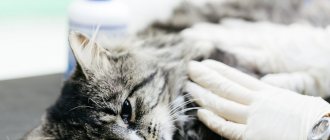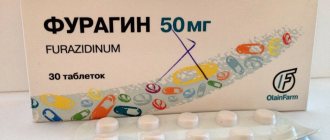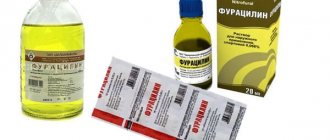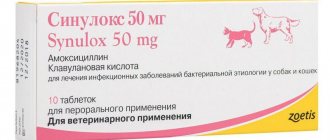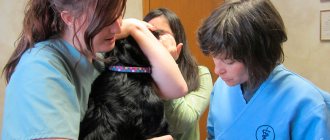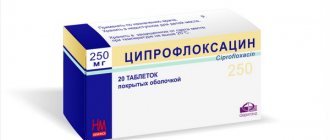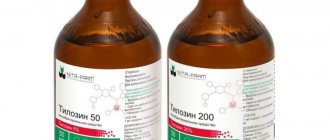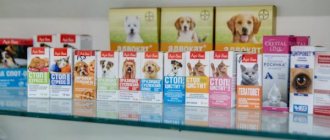Doxycycline is a drug belonging to the class of antibiotics. It is used only as prescribed by the attending physician after a preliminary examination and an accurate diagnosis. If the dose is incorrectly selected, it can cause severe side effects in the animal, including the development of anaphylactic shock. When prescribing Doxycycline in case of intolerance, analogues can be prescribed, but only with the permission of a veterinarian.
"Doxycycline" for cats: instructions for use
Antibacterial agents
Doxycycline as an antibacterial drug belongs to the tetracycline group. Doxycycline is used to treat a number of different infectious and inflammatory diseases, from when a cat is seriously ill with hemobartenellosis, in which the hematopoietic process of the animal’s body is disrupted, to wounds and scratches that a cat can receive due to a fight with another animal, or as a result of injury. But you need to pay attention that you can give cats Doxycycline only after passing all the tests and according to the scheme developed by the veterinarian.
In domestic veterinary practice, when treating infectious and inflammatory diseases in cats and dogs, doctors have to prescribe the drug Doxycycline, which is prescribed to people. The fact is that this is practically the only analogue of a drug for cats that can be purchased in our country - the drug Ronaxan, produced in France. It comes in tablet form.
With a very severe viral infection, it is impossible to do without Amoxicillin for cats. This is a long-acting semi-synthetic antibacterial drug. But due to the fact that it is produced in Spain, it is often not available in our market. As a substitute, the veterinarian may prescribe Flemoxin Solutab. The 1st tablet contains acid-resistant amoxicillin . The drug has a strong bactericidal effect.
When can you give Doxycycline to a cat?
The drug can be given to cats if their condition requires it. The medication is prescribed in strictly defined cases after tests and an in-person examination by a veterinarian:
- infectious lesions of any body system;
- treatment of chlamydia and eye lesions, including conjunctivitis;
- prevention of postoperative complications and their therapy;
- elimination of purulent lesions on the skin;
- infections of the gastrointestinal tract and biliary tract;
- elimination of the inflammatory process during genitourinary infections.
Symptoms of the most common infectious diseases in cats
Doxycycline is not used for viral infections, which cat owners often do out of ignorance. Bacteria and viruses have completely different effects on the body, belong to different groups of pathogens and require different approaches to therapy. Viruses are eliminated by immunomodulators and antiviral agents.
Examination of a cat by a veterinarian
Attention! When self-treating a pet with Doxycycline, it is necessary to exclude absolutely all contraindications and begin therapy with a minimum dose. After the first dose, it is recommended to monitor the cat's condition. If her health worsens, she needs to see a doctor for additional testing and possible symptomatic treatment due to the side effect.
Doses, pros and cons
An acceptable dosage of Doxycycline for cats is 5-10 mg per 1 kg of animal weight. Cats and cats should take the indicated volume once a day, preferably in 2 doses. The course of treatment depending on the disease: 5-10 days, up to 2 weeks. It is also important to know how to dilute Doxycycline for cats: part of the tablet is dissolved in 1 ml of water, then the cat drinks 0.1 mg - once a day.
Advantages of the drug
- Doxycycline does not cause sensitization; which means they do not contribute to the body becoming sensitive to allergens.
- Doxycycline does not cause teratogenic effects; the chemical composition of the drug does not lead to the occurrence of morphological malformations.
- Doxycycline does not adversely affect the zygote and blastocysts.
Disadvantages in application
- Self-medication with Doxycycline can negatively affect the development of tooth enamel in kittens.
- Long-term use of the drug can lead to the fact that when the cat begins to lose hearing acuity.
- Uncontrolled use of Doxycycline can negatively affect liver and kidney cells.
The drug is contraindicated
- Doxycycline is not prescribed if the cat cannot tolerate tetracycline antibiotics.
- Doxycycline is not prescribed if the cat is allergic and one of the components of the medication is included in the group of allergens for the animal.
- Doxycycline should not be prescribed if your cat has liver or kidney disease, or both.
At the first sign of an allergy or if any complications occur, stop treating the cat with Doxycycline. Doxycycline, as a specific drug, is indicated for the treatment of certain diseases, and it must be used according to a strictly defined regimen.
Possible side effects and their frequency
When using Doxycycline, it is possible that unwanted reactions may occur on the part of your pet.
Table. Side effects from Doxycycline
| By-effect | Frequency and Feature |
| Yellowing and destruction of enamel | Sometimes, more often in kittens and weakened individuals. Cannot be eliminated |
| Nausea and diarrhea | Sometimes |
| Vomit | Sometimes |
| Liver disorders | Rarely, usually in the presence of organ pathologies |
| Kidney disorders | Rarely, usually in the presence of organ pathologies |
| Hearing loss | Rarely |
| Esophagitis | Often, usually with high or incorrect doses |
| Decreased appetite | Often |
| Symptoms of disorientation and dizziness | Sometimes |
| Hives and itchy skin | Sometimes |
| Anaphylactic reactions | Rarely |
| Bump and redness at the injection site | Rarely |
The appearance of undesirable reactions from the body requires contacting a veterinarian already on the first day, since in a few hours the pet’s condition can worsen several times.
Attention! In case of an overdose, the animal experiences the side effects described above, but they are more pronounced and sometimes require symptomatic therapy, including gastric lavage.
A cat with side effects from Doxycycline experiences weakness and lack of appetite
Indications for use
At the beginning it was already said that the veterinarian can prescribe Doxycycline, which is prescribed to people. Therefore, as such, there are no instructions for the use of Doxycycline for cats or dogs. Cat and cat also take these tablets to treat the following diseases :
- respiratory organs;
- genitourinary system;
- skin;
- chlamydia, eye disease;
- hemobartenellosis;
- and other viruses.
If a cat suffers from one of these diseases, Doxycycline can help your beloved pet. But it is imperative that this drug was prescribed by a veterinarian in order to feel 100% confident that your pet cat will soon recover, feel good and be happy to meet its beloved owner.
Advantages and disadvantages of Doxycycline
Like any medicine, an antibiotic has its strengths and weaknesses, which must be taken into account during treatment. The disadvantages of prescribing Doxycycline include the following:
- when using an antibacterial agent, kittens and cats with weakened teeth may experience problems with the enamel, up to its complete destruction, tooth loss and the development of caries;
- with prolonged use of the medication for more than two weeks, it can lead to hearing loss, usually this symptom gradually disappears over several months;
- the active substance can adversely affect the functioning of the liver and kidneys even in healthy animals, so after a course of therapy it is recommended to check the condition of these organs.
Antibiotics have their strengths and weaknesses
The benefits of prescribing Doxycycline in cats include the following:
- the drug rarely causes side effects and severe allergic reactions;
- well tolerated in combination therapy with other antibiotics and medications of other groups;
- if used with caution, it can be used during pregnancy if the health of the individual requires it;
- It is believed that Doxycycline does not negatively affect the development of the zygote and blastocysts.
What does Doxycycline treat for cats? Can Doxycycline be used on a cat?
We are talking about a broad-spectrum antibacterial drug, which belongs to the tetracycline group and is used to treat various infectious and inflammatory diseases, as well as as prophylaxis in the postoperative period.
“Doxycycline” for cats can be prescribed for a number of indications, starting with the treatment of such a common infectious disease among furry four-legged pets as chlamydia, and ending with the healing of all kinds of wounds and scratches received as a result of fights with other animals, or other types of injury. As for the dosage, “Doxycycline” for a cat, which assumes only a single release form (capsules), is prescribed depending on the nature and stage of the disease, weight category, age and individual characteristics. For example, it is not uncommon for a doctor to strongly recommend replacing a given drug with “Tetracycline” or even the more universal “Penicillin” for the simple reason that “Doxycycline” is a rather specific drug, which is recommended to be used only for certain ailments and for strictly defined reasons. scheme.
Ronaxan
for the treatment of diseases of bacterial etiology in dogs and cats
(Developer organization: “Merial”, 29 avenue Tony Garnier, 69007, Lyon, France)
Trade name of the drug: Ronaxan.
International nonproprietary name: doxycycline.
Dosage form: tablets for oral use.
Ronaxan is available in two dosages containing doxycycline (in the form of hyclate) as the active ingredient - 20 mg/tablet. and 100 mg/tablet, as well as excipients: magnesium stearate and microcrystalline cellulose.
In appearance, the drug is a round biconvex tablet from light yellow to yellow.
The shelf life of the medicinal product, subject to storage conditions in the manufacturer's closed packaging, is 36 months from the date of manufacture.
Do not use Ronaxan after the expiration date.
Ronaxan is produced packaged in 10 tablets in blisters made of polyvinyl chloride and aluminum foil on a paper base. Blisters are packaged in cardboard boxes individually (for a dosage of 100 mg/tablet) or 2 pieces (for a dosage of 20 mg/tablet) along with instructions for use.
Store the medicinal product in the manufacturer's sealed packaging, separate from food and feed, in a place protected from direct sunlight, at a temperature of 0°C to 25°C, out of the reach of children.
Unused medicinal product is disposed of in accordance with legal requirements.
Ronaxan is available without a veterinarian's prescription.
II. Pharmacological properties
Ronaxan belongs to the antibacterial drugs of the tetracycline group.
Doxycycline hyclate, which is part of the drug, belongs to the third generation semisynthetic antibiotics of the tetracycline group, is active against gram-positive and gram-negative microorganisms: Staphylococcus spp., Streptococcus spp., Corynebacterium spp., Actinomyces spp., Clostridium spp., Bacillus anthracis, Erysipelothrix spp. ., Listeria spp. Fusobacterium spp., Pseudomonas spp., Pasteurella spp., Eikenella spp., Enterococcus spp., Enterobacteria spp., Moraxella spp., Brucella spp., Bartonella spp., Proteus mirabilis, Escherichia coli, Citrobacter, Serratia, Bacteroides tectum, Salmonella , as well as mycoplasmas, spirochetes, chlamydia and rickettsia.
The mechanism of the bacteriostatic effect of doxycycline is associated with inhibition of enzymes that catalyze the binding of aminoacetyl RNA to ribosomal acceptors, which leads to blocking the interaction of aminoacyl transport RNA with the 30S subunit of the ribosomal membrane and disruption of protein synthesis of the microbial cell.
After oral administration of the drug, doxycycline hyclate is easily absorbed from the gastrointestinal tract and reaches the systemic circulation, the maximum plasma concentration is observed 3 hours after administration, remaining at a therapeutic level for 24 hours; easily penetrates into most organs and tissues, is metabolized in the liver with the formation of inactive metabolites, and is excreted from the body mainly in feces and urine.
In terms of the degree of impact on the body, Ronaxan is classified as a moderately hazardous substance (hazard class 3 according to GOST 12.1.007-76); in recommended doses it does not have a sensitizing, teratogenic or embryotoxic effect.
Ronaxan is prescribed to cats and dogs for therapeutic purposes for diseases of the respiratory system (rhinitis, tonsillitis, bronchopneumonia), genitourinary system (cystitis, pyelonephritis, prostatitis, endometritis), skin (purulent dermatitis, abscesses) and other infections, the pathogens of which are sensitive to doxycycline.
Contraindications for use are the animal’s hypersensitivity to the components of the drug and antibiotics of the tetracycline group, severe dysfunction of the liver and/or kidneys.
Ronaxan should not be used by pregnant and lactating females, as well as puppies and kittens during the period of dental development.
Ronaxan is administered to animals individually orally in a mixture with food or forcibly administered to the root of the tongue once a day at a dose of 10 mg of doxycycline per 1 kg of animal weight. The course of treatment for acute diseases is 3-5 days, for chronic diseases – 8-10 days.
As prescribed by a veterinarian, the dosage and duration of use may be increased.
In case of an overdose of Ronaxan, the animal may experience vomiting, refusal to feed, and loss of coordination of movement. In this case, you should stop using the drug and prescribe symptomatic therapy.
Instructions
The dosage for a cat is 5-10 mg per 1 kg, the drug is used once. If the maximum possible dose is used, then it should be divided equally, the first part should be applied in the morning and the second in the evening. The drug must be placed in the cat's mouth, and then a little milk from a syringe must be poured into the cat's mouth. In this case, you will be sure that the drug is in the cat’s body. Remember that the pet must be kept together. If you perform this procedure alone, your cat may scratch you.
Do not pour large amounts of milk into the cat's mouth, as this may weaken the effect of the drug.
Interaction with other drugs
If doxycycline is taken together with methoxyflurane, kidney failure will quickly develop. And this can quickly lead to death.
Doxycycline is strictly prohibited from being prescribed with antacids. And especially those that contain magnesium, calcium and aluminum salts.
It is unacceptable to take medications that contain sodium bicarbonate. Since in the process of interaction heavy complexes of substances can be formed, which will be problematic to remove from the blood.
Composition and action
Doxycycline is a tetracycline derivative. The substance has the ability to penetrate almost all tissues and fluids of the body, accumulate in bones, organs - liver, spleen, and penetrates through the placenta to the fetus. In bones and teeth, in combination with calcium, it forms insoluble compounds.
Doxycycline is active against most pathogenic microorganisms, in particular:
- streptococci;
- staphylococcus;
- listeria;
- clostridia;
- shigella;
- Klebsiella and others.
Less effective against Proteus and enterococci. Doxycycline is more often used to treat bronchopulmonary infections - pneumonia, acute bronchitis of a bacterial nature. The antibiotic is used to treat ehrlichiosis in dogs.
Analogs
Ronaxan
The drug is available in tablets, the dose of the active substance is 10 mg/kg. Sick animals need to be given the drug daily, and it is important not to forget to maintain the dosage. We recommend dividing the dosage, in which case a constant level of the active substance in the blood will be maintained.
Vibramycin
This drug is available both in the form of capsules and as a solution for intravenous administration. A huge advantage of the drug is that it is a tetracycline antibiotic. This suggests that they can actively fight gram-positive and gram-negative pathogens.
First, the cat should be given the maximum possible dose, that is, 4 mg/kg, and then the dose is gradually reduced. We recommend using injections only in a veterinary hospital. Since self-treatment with injections can only harm your pet.
Doxycycline 100 ml costs on average 300-350 rubles.
The price of vibramycin (20 tablets) is approximately 200 rubles.
Ronaxan is considered the most expensive drug, since for 10 tablets of 100 mg you need to pay 600-650 rubles.
Review: Drug Synthesis Doxycycline capsules - I would not recommend it for cats
Good day to my friends and readers! Those who regularly read my reviews know that I am involved in the adoption of stray animals. Very often, animals found on the street need treatment, so I have an impressive veterinary first aid kit in my house. Most often, I use already proven treatment regimens and drugs that have been tried more than once, but from time to time I try something new. A cat that came into my home a few months ago was sick with feline herpesvirus (rhinotracheitis). When treating this disease, antibiotics are required in the regimen and I was recommended Doxycycline. I have always used other antibiotics to treat this disease, but then I decided to try a new drug, and besides, it cost just a penny. The drug is common, available in any pharmacies, only the manufacturers and the price of the capsules may change slightly (this antibiotic is not available in tablets, but in capsules).
The drug has a decent shelf life, as much as 4 years.
The box contains a leaflet with instructions, the writing is small, the text is not easy to read.
Unfortunately, the photo of the capsules was not preserved, since all the drug was used up. The drug is not particularly convenient for treating cats, since the capsule has to be opened and the powder divided into several parts. Initially, the drug was tested on one cat; I was given recommendations, together with doxycycline, to immediately start a course of the Vetom 1.1 probiotic. As I already wrote above, initially the capsule needs to be opened and the required amount separated (I deliberately do not indicate the doses of drugs in my reviews so that people do not self-medicate, but contact a veterinarian). Mix the required dose of powder with water and drink it to the cat. It seems that the drug is very bitter and tasteless, because after taking it the cat tried to induce vomiting and coughed for a very long time, which caused me concern. In this state, the cat refused food and even treats for some time. At subsequent doses the reaction was repeated.
Initially, I assumed that this was an individual reaction of the cat to the medicine and subsequently applied the same treatment regimen to several more cats. This effect was more pronounced in some, less in others, but all cats experienced severe discomfort during treatment. The drug proved to be effective; after a course of doxycycline, all cats first noted a decrease in runny nose and lacrimation, and then they completely recovered. Despite the attractive price and excellent treatment effect, I will not use this drug in future treatment regimens for cats, due to a bad reaction to taking the medication in animals. Still, I will return to even more expensive, but also gentler antibiotics. No other adverse reactions were identified in cats; when used together with probiotics, there were no disruptions in the functioning of the gastrointestinal tract. I recommend the drug because it is effective, but it is still better to use it to treat people.

